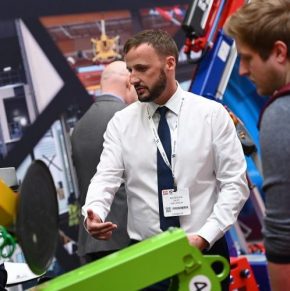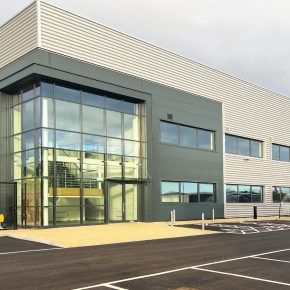
GUEST ARTICLE: Businesses finding new ways to innovate in the face of COVID-19 and climate crisis
The international outlook for R&D is remarkably promising despite strong headwinds, according to research released by Ayming Group, the business performance consultancy specialising in innovation.
Ayming’s second annual International Innovation Barometer (IIB) reveals that R&D departments are being empowered by the creation of innovation ecosystems, new funding methods, and the deployment of technology.
R&D teams remain resolute in the face of several key obstacles. Not only has COVID-19 caused expectations for budget increases to decline 12 per cent, but complexity is making it increasingly difficult to innovate successfully, international competition for talent is fierce, and collaboration is proving challenging.
However, advances in technology are empowering R&D professionals, who see it as the most important driver of innovation, selected by 39% of survey respondents.
All the same, the growing technical nature of R&D means businesses are looking for outside support, with use of external private resources up from 35 to 48%.
Collaboration may be down, but a new outsourcing hybrid model is emerging whereby big companies create an innovation ecosystem with smaller ones.
The funding landscape has also diversified. Incentives remain crucial, with R&D tax credits most popular at 47%, but applications remain overcomplicated – a particular problem for SMEs with limited resources.
SMEs often cannot finance R&D themselves, so these challenges have caused a jump in private funding, with equity/debt funding up 6%, and crowdfunding up 17%.
Mark Smith, Partner of Innovation Incentives at Ayming UK, commented: “The pace of economic change is rapid, and Covid-19 has added fuel to the fire.
“And, while the impact of the pandemic on R&D has yet to fully reveal itself, companies must innovate through market downturns.
“Fortunately, this report reveals that businesses and governments alike are discovering new ways both to fund their innovation and make it more productive.”
“Yet these emerging trends seem chiefly driven by private resources. Governments can safeguard innovation spending by encouraging further education on R&D – because ultimately businesses need to know how much they are doing to decide whether to boost activity – and through the provision of further incentives.
“By demonstrating that innovation will be rewarded, governments can help maintain R&D growth.”
This year’s IIB takes a deep dive into sustainable innovation and finds that most businesses do not prioritise sustainability, with 35% allocating between 1 and 10% of their budget.
Respondents say this is primarily to improve business performance, indicating sustainability is a secondary concern.
There is high demand for more environmentally friendly products and processes, and more needs to be done, but legislation – which is unanimously seen as relatively unimportant by respondents – is not the answer.
The key seems to lie in increased tax incentives for sustainable projects, which is the second most important factor behind technology to help achieve sustainable innovation, at 28%.
Smith added: “Solving problems is at the heart of innovation, so it is essential both for COVID-19 and for challenges like the climate crisis. It’s becoming clear that there are huge commercial opportunities in environmental solutions. Businesses must rise to this challenge, and with urgency.
“It seems that greater incentives are the way forward because, although providing a minimum standard, regulation can distract businesses from their underlying ambitions.
“For a supercharged tax incentive to work, definitions need to be drawn up. It needs to be crystal clear specifically what counts as sustainable R&D for it to be rewarded. In my mind, that is our way to a circular economy.”
Ayming surveyed a combination of 330 business executives and R&D managers from 13 countries across North America and Europe.
Latest news

2nd April 2025
FIT Show 2025 Launches Innovative Marketplace Feature to Enhancing Value for Installers
FIT Show, the UK’s leading event for the window, door, flat glass, hardware, and roofing industries, is excited to announce the launch of a brand new Marketplace feature at its upcoming 2025 event (Birmingham NEC, 29 April – 1 May).
Posted in Architectural Ironmongery, Articles, Building Industry Events, Building Industry News, Building Products & Structures, Doors, Exhibitions and Conferences, Glass, Glazing, Hand Tools, Innovations & New Products, Plant, Equipment and Hire, Power Tools, Restoration & Refurbishment, Retrofit & Renovation, Roofs, Seminars, Training, Windows
2nd April 2025
Hi-spec deployment of EJOT Colorfast at new Birmingham logistics park
EJOT Colorfast fasteners have been used extensively in the construction of eight new high-specification warehousing and logistics buildings at the Urban 8 Logistics Park in King’s Norton, Birmingham.
Posted in Articles, Building Industry News, Building Products & Structures, Building Systems, Case Studies, Facades, Restoration & Refurbishment, Retrofit & Renovation, Roofs, Walls
2nd April 2025
SWA member delivers ‘fresh Hope’ for university’s Sustainable Building department
A detailed contract to restore an iconic Art Deco building in the heart of Birmingham’s Jewellery Quarter was carried out by Steel Window Association member, The Window Repair Company (Northwest) Limited.
Posted in Articles, Building Associations & Institutes, Building Industry News, Building Products & Structures, Building Systems, Case Studies, Glass, Glazing, Restoration & Refurbishment, Retrofit & Renovation, Steel and Structural Frames, Sustainability & Energy Efficiency, Windows
1st April 2025
Gilberts Takes Thermal Comfort to New Heights
Gilberts Blackpool is continuing to build on its reputation as a pioneer with the unveiling of ThermaAstute™ – the most extensive range of thermally sensitive diffusers in the market.
Posted in Air Conditioning, Articles, Building Industry News, Building Products & Structures, Building Services, Facility Management & Building Services, Heating, Ventilation and Air Conditioning - HVAC, Innovations & New Products, Restoration & Refurbishment, Retrofit & Renovation, Sustainability & Energy Efficiency
 Sign up:
Sign up: